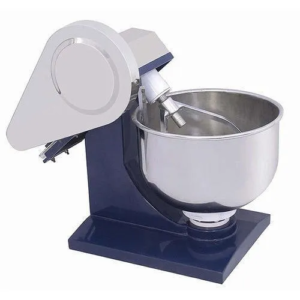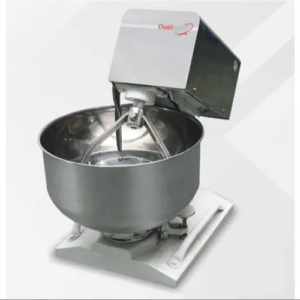Bakery Mixer – The Ultimate Guide to Features, Benefits, Types, and Buying Tips
Introduction to Bakery Mixers
A bakery mixer is one of the most essential machines for bakeries, restaurants, commercial kitchens, and food processing units. Whether you are making bread dough, cake batter, cookies, pizza dough, or whipped cream, a high-quality bakery mixer ensures uniform mixing, kneading, and aeration of ingredients, saving time and effort.
With the increasing demand for commercial baked goods, investing in a powerful and efficient bakery mixer is crucial for improving productivity, consistency, and quality. Modern commercial mixers come in various capacities, speeds, and attachments to cater to different baking needs.
This comprehensive guide explores everything you need to know about bakery mixers, including types, features, working mechanisms, advantages, price ranges, installation tips, and maintenance guidelines to help you make an informed decision.
Types of Bakery Mixers
Bakery mixers are categorized based on their mechanism, size, and application. Below are the most common types:
1. Spiral Mixer (Dough Mixer)
✅ Best for kneading heavy dough (bread, pizza, pastries).
✅ Features a rotating bowl and a spiral mixing hook.
✅ Ensures better gluten development in dough.
✅ Ideal for commercial bakeries, pizzerias, and large-scale dough production.
2. Planetary Mixer (Cake Mixer or Multi-Purpose Mixer)
✅ Comes with interchangeable attachments: whisk, dough hook, and beater.
✅ Suitable for cake batter, whipping cream, cookie dough, and light dough.
✅ Used in bakeries, pastry shops, restaurants, and hotels.
✅ Available in tabletop and floor-standing models.
3. Horizontal Mixer (Industrial Dough Mixer)
✅ Used for mass production in food industries.
✅ Ensures uniform mixing of large batches of dough.
✅ Requires high-power motors and large space.
4. Tilt-Head Mixer (Small Bakery Use)
✅ The mixing head tilts for easy ingredient addition.
✅ Best for home bakers and small bakery setups.
✅ Usually available in 5L to 10L capacities.
5. Stand Mixer (Heavy-Duty Home Use & Small Bakeries)
✅ Stands on a sturdy base with a large mixing bowl.
✅ Offers multiple speed settings and attachments.
✅ Commonly used for cakes, cupcakes, and small bread batches.
Key Features of a Bakery Mixer
When selecting a commercial bakery mixer, consider the following features to enhance efficiency and productivity:
1. Motor Power & Speed Settings
-
Higher wattage means more powerful mixing.
-
Low-speed settings for kneading heavy dough.
-
Medium to high-speed settings for whipping, beating, and aeration.
-
Variable speed control ensures precise mixing.
2. Mixing Bowl Capacity
-
5L – 10L: Suitable for small bakeries and home bakers.
-
20L – 40L: Ideal for small commercial bakeries.
-
50L – 100L+: Best for large-scale bakery production.
3. Mixing Attachments & Functions
Most planetary mixers come with three standard attachments:
-
Dough Hook – Used for kneading bread and pizza dough.
-
Flat Beater – Ideal for cake batter, cookies, and mashed potatoes.
-
Wire Whisk – Best for whipping cream, egg whites, and light mixtures.
4. Heavy-Duty Stainless Steel Construction
5. Safety Features
-
Bowl Guard – Prevents hands from coming in contact with moving parts.
-
Auto Shut-Off – Stops the mixer in case of overheating or overloading.
-
Emergency Stop Button – Ensures operator safety.
6. Silent & Vibration-Free Operation
7. Digital Display & Programmable Settings
How Does a Bakery Mixer Work?
A bakery mixer works by combining mechanical rotation, variable speed settings, and specialized attachments to mix ingredients efficiently.
Step-by-Step Mixing Process:
-
Ingredient Addition – Ingredients (flour, sugar, eggs, etc.) are added to the mixing bowl.
-
Attachment Selection – The appropriate attachment (whisk, beater, or dough hook) is fixed.
-
Speed Adjustment – The mixer is set to low, medium, or high speed.
-
Mixing Process – The attachment rotates, ensuring consistent blending.
-
Completion & Removal – The mixture is removed for baking or further processing.
Advanced mixers include programmable timers, auto shut-off, and digital speed control for precise and automated mixing.
Advantages of Using a Bakery Mixer
✅ Saves Time & Effort
✅ Ensures Uniform Mixing
✅ Increases Production Efficiency
✅ Reduces Ingredient Wastage
✅ Versatile Usage
-
Can be used for cakes, bread, cookies, pizza dough, cream, and frosting.
✅ Enhances Product Quality
How to Choose the Right Bakery Mixer? (Buying Guide)
1. Determine Your Usage & Capacity Needs
-
Home baking – 5L to 10L mixer.
-
Small bakeries – 20L to 40L mixer.
-
Large-scale production – 50L+ industrial mixer.
2. Consider Power & Speed Control
3. Look for Durable Construction
4. Check for Safety Features
5. Budget & Warranty
Conclusion
A bakery mixer is a game-changer for anyone involved in baking, ensuring speed, consistency, and efficiency. Whether you run a home-based bakery, a small pastry shop, or a large commercial bakery, investing in the right bakery mixer will enhance productivity and quality.
🚀 Looking for the best bakery mixer? Explore top-rated models and take your baking business to the next level! 🚀






















